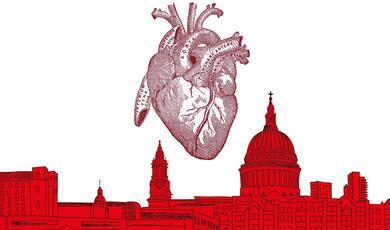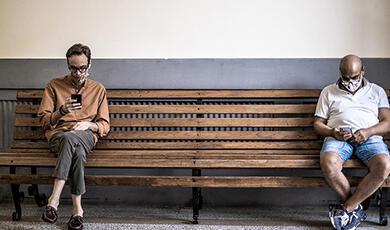How Do Vaccines Work?
Share
- Details
- Text
- Audio
- Downloads
- Extra Reading
Vaccination has changed the world, saving millions of lives and enabling us to eradicate a lethal disease for the first time in human history – not to mention its critical role in ending the Covid-19 pandemic.
This lecture explores how a vaccine actually works, why mRNA vaccines are truly groundbreaking and why we can’t simply vaccinate against everything.
Download Text
“How Do Vaccines Work?”
Professor Robin May
Wednesday 26 May 2025
For this year’s lecture series, I am trying a different format of transcript. Rather than a long-form written document, which has been largely rendered obsolete by the ability to transcribe from the YouTube recording, this handout is a brief summary of the key topics in the lecture, together with some more extensive suggestions for extra reading. As ever, we would be delighted to hear your thoughts on this new approach!
Vaccines have transformed the world. Over the last fifty years, an estimated 150 million lives have been saved by the power of vaccination, the vast majority of which were children. Two generations ago, parents lived in permanent fear of childhood diseases like whooping cough or measles, whilst most adults could point to friends or colleagues who had been left disfigured or disabled by diseases such as smallpox and polio. In marked contrast, today vaccinations mean that most childhood ailments are inconvenient, rather than deadly. They enable millions of us to go on holiday to far flung destinations, safe in the knowledge that we are protected from tropical diseases such as yellow fever. And they have even consigned one deadly disease – smallpox – to the history books. This lecture explores how that transformation came about, how vaccines work, and what the vaccinations of the future might look like.
A Short History of Vaccination
Most people are familiar with the story of Edward Jenner who, on 14th May 1796, immunised James Phipps with cowpox, thereby rendering him immune to the closely related disease smallpox and launching the field of vaccination science (as well as providing it with a catchy new name, derived from the Latin for cow: vaccinae). At the time, however, European scientists had no idea what actually caused smallpox, or any other disease for that matter. The dominant theory of the day was that illnesses were caused by ‘bad air’, and it would be another half century before the ‘germ theory’ of disease started to catch on. But over the last 50 years or so, extraordinary advances in immunology mean that we now have an astonishingly detailed understanding of the molecular basis of vaccination.
Under the Skin – What Happens During Vaccination?
We know that the deliberate introduction of a foreign protein (an ‘antigen’) into the body results in the activation of two distinct cell types: T-cells and B-cells. T and B-cells share a common and remarkable feature – as they develop, they ‘reshuffle’ different pieces of DNA within their chromosome to create a completely novel surface receptor. Because this process is essentially random, each B or T cell has a unique receptor on its surface and therefore has the ability to recognise a different antigen, meaning that your immune system has the capacity to discriminate between millions of foreign molecules.
When one such molecule enters the body, it triggers the B- and T-cells that ‘match’ to become active and start to proliferate. In a complex and carefully orchestrated series of steps, the antigen-matching or ‘cognate’ B-cell starts to produce antibodies against the foreign molecule it has recognised. At the same time, it undergoes a remarkable process of highly-targeted DNA mutation to try and ‘refine’ the antibody structure, making it even more effective at blocking the pathogen. And finally, once antibody production is proceeding at full speed, some of those B-cells switch fates and become dormant. These dormant or ‘memory’ cells will persist throughout your life, conferring the ability to respond extremely rapidly and effectively against the same pathogen, should you encounter it again – even if that encounter is decades later.
How Do You Make a Vaccine?
In principle, the astonishing diversity of the immune response means that it is theoretically possible to vaccinate anyone against anything. But in practice, life isn’t that simple. One of the major challenges in designing new vaccines is the ability to produce strong and durable immunity without provoking a damaging immune response. For many decades, the vaccinologists have used one of three approaches: attenuated vaccines (essentially ‘weakened’ forms of the target pathogen), inactivated vaccines (dead pathogens) or subunit vaccines (fragments of the pathogen, often just a single protein, which are nonetheless sufficiently specific to allow the immune system to identify the live organism from which it is derived). However, the Covid-19 pandemic spurred a massive acceleration in two new vaccine approaches: viral vector vaccines and mRNA vaccines. Both of these are designed to harness the machinery of your own cells to create an antigen in situ and thereby trigger a potent immune response – something that was demonstrated to amazing effect during the global rollout of both types of vaccine during the pandemic.
The Future for Vaccines
We are living at one of the most exciting times in history for vaccinology. Advances in molecular immunology means that we are on the cusp of a future in which we may be able to vaccinate people against dozens of currently untreatable infections. The revolution in genetics means that we can now create vaccines against novel pathogens within weeks, rather than years, and opens the door to ‘personalised’ vaccines that could be tailored to individual infections or perhaps even individual immune systems. Most excitingly of all, advances in genomics mean that we are now starting to develop highly effective vaccines against diseases that are not infectious in nature, such as cancer.
Vaccines have changed the world beyond recognition over the last 200 years, but perhaps the next 200 years will prove even more exciting…
Key topic in the lecture
Further reading
Jenner and the first vaccines: Case study - Edward Jenner and vaccination - Medicine in 18th- and 19th-century Britain, c.1700-c.1900 - Edexcel - GCSE History Revision - Edexcel - BBC Bitesize
How do vaccines work? Beginners’ guide: Explaining How Vaccines Work | Vaccines & Immunizations | CDC
More advanced information: B Cells | British Society for Immunology
Antibody structure and function (semi-advanced): Antibody basics | Abcam
Vaccine design and delivery: How are vaccines developed?
Vaccine types, including mRNA and viral vector vaccines: Understanding Six Types of Vaccine Technologies | Pfizer
The ethics and challenges of vaccination: Ethical Issues and Vaccines | History of Vaccines
Cancer Vaccines: Cancer Vaccines | Cancer Research Institute
© Professor Robin May, 2025
Jenner and the first vaccines: Case study - Edward Jenner and vaccination - Medicine in 18th- and 19th-century Britain, c.1700-c.1900 - Edexcel - GCSE History Revision - Edexcel - BBC Bitesize
How do vaccines work? Beginners’ guide: Explaining How Vaccines Work | Vaccines & Immunizations | CDC
More advanced information: B Cells | British Society for Immunology
Antibody structure and function (semi-advanced): Antibody basics | Abcam
Vaccine design and delivery: How are vaccines developed?
Vaccine types, including mRNA and viral vector vaccines: Understanding Six Types of Vaccine Technologies | Pfizer
The ethics and challenges of vaccination: Ethical Issues and Vaccines | History of Vaccines
Cancer Vaccines: Cancer Vaccines | Cancer Research Institute
© Professor Robin May, 2025
Part of:
This event was on Wed, 26 Mar 2025
Support Gresham
Gresham College has offered an outstanding education to the public free of charge for over 400 years. Today, Gresham College plays an important role in fostering a love of learning and a greater understanding of ourselves and the world around us. Your donation will help to widen our reach and to broaden our audience, allowing more people to benefit from a high-quality education from some of the brightest minds.


 Login
Login







